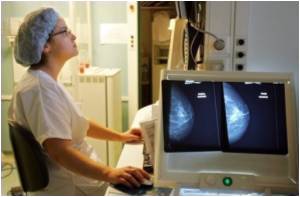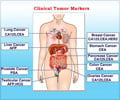Natural cell-destruction process that protects the body from tumors, could actually under certain conditions aid in tumor development,Australian researchers have discovered.

The research team's discovery, led by Professor Andreas Strasser from the institute's Molecular Genetics of Cancer Division, has implications for the understanding of how cancers develop and will inform the ongoing development of a new class of anti-cancer drugs called BH3 mimetics.
"Until now everybody believed that a failure of damaged cells to undergo suicide allowed mutated cells to proliferate, which contributes to tumour development. That's certainly still true but we discovered that, in certain settings, the opposite holds: the body's natural cell-suicide program can fuel tumour development," said Professor Strasser.
The research team's experiments revealed that repeated cycles of cellular depletion and tissue regeneration, by activating stem cells, could promote tumour development.
In situations where the DNA in many cells is damaged, such as when the body is repeatedly exposed to low doses of radiation, there are repeated cycles of cell death in the body's tissues.
"Attempts by the body's stem cells to repopulate the depleted tissue can then actually drive the tumour development. That's because the radiation, while killing many cells within a tissue, will create mutations in some of the surviving stem cells. When such abnormal (mutated) stem cells repopulate the tissue, they will divide many times and this can promote the development of tumours," said Professor Strasser.
Advertisement
Crucial to the team's research was an understanding of what happens to mice exposed to radiation when a gene called Puma is missing.
Advertisement
"The surprise was that mice that don't carry the Puma gene are protected from this type of tumour development. Puma is essential for the death of cells that have damaged DNA. If mice don't have the Puma gene when they receive low doses of radiation the white blood cells are not destroyed, so you don't force mutated stem cells to become activated (and divide) to replenish the blood system."
Professor Strasser said the research suggested that the risk of cancer was increased in people who experienced cycles of tissue destruction followed by tissue re-population by stem cells.
He said: "Such cycles may account for the liver cancers frequently associated with viral (hepatitis C) infection or alcohol-related liver damage."
The research also helps explain the so-called secondary cancers that sometimes arise in patients who were cured of their primary cancer by chemotherapeutic drugs that cause DNA damage."
he findings will also inform the ongoing development of a new class of anti-cancer drugs called BH3 mimetics. These drugs are designed to kill cancer cells.
Professor Strasser said: "Chronic exposure to such drugs could lead to the death of large numbers of normal cells that would then need to be replaced. In certain circumstances this could promote the development of secondary cancers, particularly if patients are receiving treatments such as chemotherapy or gamma-radiation that can lead to cancer-causing mutations in stem cells."
Source-ANI









